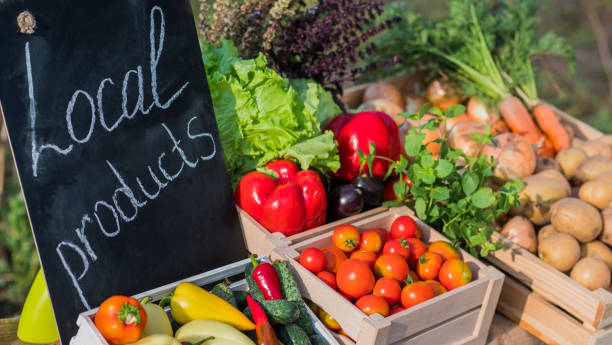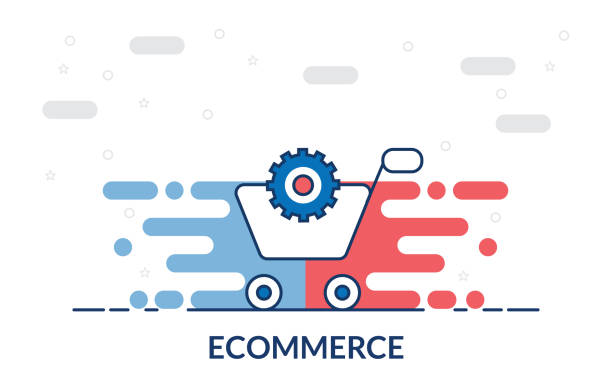
Introduction:
In today’s rapidly changing world, the agricultural sector plays a crucial role in ensuring food security and economic growth. However, many farmers face challenges when it comes to connecting their produce with the market. In this blog, we will explore how farmers can bridge the gap between their farms and the market, creating profitable ventures along the way. So, let’s dive in!

- Understanding Market Trends:
To establish a profitable venture, farmers need to stay updated on market trends. Analyse consumer demand, identify popular crops, and evaluate the potential profitability of different products. This information will help you make informed decisions about what to grow and how to position your produce in the market.
- Building Strong Networks:
Networking is essential for farmers to connect with potential buyers, suppliers, and experts in the agricultural field. Attend agricultural expos, trade fairs, and community events to meet like-minded individuals and establish valuable connections. Engaging with local farming communities and agricultural organizations can also open doors to new opportunities.
- Collaborative Farming:
Collaborative farming involves farmers working together to pool resources, share knowledge, and collectively market their produce. By joining forces with other farmers, you can increase your bargaining power, reduce costs, and access larger markets. Establishing cooperatives or joining existing ones can be an effective way to achieve these goals.
- Direct Marketing Channels:
In addition to traditional markets, consider exploring direct marketing channels such as farmers’ markets, community-supported agriculture (CSA) programs, and farm-to-table restaurants. These platforms provide direct access to consumers, allowing you to showcase the quality and uniqueness of your products. Establishing a strong brand and building relationships with customers can lead to loyal and repeat business.

- E-commerce and Online Presence:
In today’s digital era, having an online existence is crucial. Create a website or utilize e-commerce platforms to showcase your farm, products, and values. Implement search engine optimization (SEO) techniques to ensure your website appears in relevant online searches. Leverage social media platforms to engage with customers, share updates, and market your products effectively.
- Value-Added Products:
Consider adding value to your farm products to increase profitability. Processing raw materials into value-added products like jams, pickles, or artisanal cheese can fetch higher prices and attract a wider customer base. However, thorough market research and understanding consumer preferences are essential before venturing into value-added product lines.
- Diversification and Seasonal Planning:
Diversifying your products can help mitigate risks and ensure a steady income throughout the year. Plan your crops strategically, taking into account seasonal demand, market fluctuations, and crop rotation techniques. By offering a diverse range of products, you can cater to different consumer preferences and capitalize on market opportunities.
Conclusion:
Linking farmers with profitable ventures requires a combination of market awareness, networking, and adaptability. By understanding market trends, building networks, exploring direct marketing channels, establishing an online presence, and diversifying products, farmers can enhance their profitability and create sustainable agricultural businesses. Remember, the journey from farm to market is not without challenges, but with determination and strategic planning, success is within reach.
- Quality and Consistency:
In a competitive market, quality and consistency are key factors that can set your farm apart from others. Focus on producing high-quality crops or products that meet or exceed industry standards. Implement good agricultural practices, such as proper irrigation, pest management, and post-harvest handling, to ensure the freshness and longevity of your produce. Consistency in delivering the same level of quality over time builds trust with customers and encourages repeat business.
- Market Research and Consumer Feedback:
Regularly conduct market research to stay informed about evolving consumer preferences, emerging trends, and potential competitors. This will help you make informed decisions about product offerings, pricing strategies, and marketing campaigns. Additionally, actively seek feedback from your customers to understand their needs and preferences better. Incorporating customer feedback into your farming practices and product development ensures that you are meeting their expectations.
- Value Chain Partnerships:
Establishing strong partnerships with value chain actors can be highly beneficial for farmers. Collaborate with distributors, processors, retailers, and exporters to streamline your supply chain and reach a wider market. These partnerships can provide access to better market opportunities, improved logistics, and valuable market insights. Building long-term relationships with reliable partners can significantly enhance your profitability.
- Continuous Learning and Skill Development:
The agricultural industry is constantly evolving, with new technologies, techniques, and market dynamics emerging. Farmers should invest in continuous learning and skill development to stay ahead. Attend workshops, seminars, and training programs to enhance your knowledge of farming practices, market trends, and business management. Embrace innovative technologies and techniques that can improve productivity, efficiency, and sustainability on your farm.
- Financial Planning and Risk Management:
Profitable ventures require effective financial planning and risk management strategies. Develop a comprehensive business plan that includes budgeting, cost analysis, and revenue projections. Consider diversifying your income sources, such as securing contracts with restaurants, hotels, or schools for a steady demand. Additionally, invest in insurance or risk mitigation strategies to protect your farm against unforeseen events like natural disasters or market fluctuations.
- Sustainable and Organic Farming:
Increasingly, consumers are seeking sustainably produced and organic products. By adopting sustainable and organic farming practices, you can tap into this growing market segment and command premium prices. Implement practices such as crop rotation, conservation tillage, water conservation, and integrated pest management to minimize environmental impact and enhance the quality of your products.
- Government Support and Programs:
Explore government initiatives and support programs designed to assist farmers in marketing their products. These programs may include financial incentives, grants, or technical assistance. Stay informed about relevant policies, regulations, and certifications that can add value to your products and facilitate market access. Engage with agricultural extension services or local authorities to access these resources and leverage them for your farm’s benefit.
Conclusion:
Building a profitable venture from farm to market requires a holistic approach that encompasses market knowledge, networking, adaptability, and continuous improvement. By focusing on quality, building strong partnerships, conducting market research, and embracing sustainable practices, farmers can maximize their profitability and create long-term success. Remember, success in agriculture is a journey that requires dedication, resilience, and a willingness to adapt to changing market dynamics. With the right strategies and a passion for farming, you can thrive in the competitive agricultural landscape.
- Branding and Storytelling:
Developing a strong brand and telling your farm’s story can help differentiate your products in the market. Highlight the unique aspects of your farm, such as its history, sustainable practices, or community involvement. Craft a compelling narrative that resonates with consumers and connects them to the origin of their food. Use your brand identity across packaging, labelling, and marketing materials to create a recognizable and memorable presence in the market.
- Customer Engagement and Loyalty Programs:
Engaging with your customers and building loyalty is essential for long-term success. Implement customer engagement strategies such as hosting farm tours, organizing workshops, or offering farm-to-table experiences. These initiatives help customers connect with your farm, understand your practices, and build trust in your products. Consider implementing loyalty programs or rewards to incentivize repeat purchases and foster a loyal customer base.
- Export and International Markets:
For farmers looking to expand their market reach, exploring export opportunities can be highly lucrative. Research international markets, identify potential buyers or distributors, and comply with export regulations and certifications. Collaborate with export agencies or trade organizations that can provide guidance and support in navigating international trade. Exporting can open up new revenue streams and expose your farm to a wider customer base.

- Packaging and Presentation:
Investing in attractive and functional packaging can significantly impact the marketability of your products. Ensure that your packaging aligns with your brand and appeals to your target customers. Use clear labeling to communicate important information such as product origin, certifications, and nutritional facts. Consider environmentally friendly packaging options to align with sustainable practices and cater to eco-conscious consumers.
- Data Analysis and Technology Adoption:
Leverage data analysis and technology to make informed decisions and optimize your farming operations. Implement farm management software that enables you to track production, analyze yields, manage inventory, and monitor costs. Use data-driven insights to identify areas for improvement, increase efficiency, and reduce waste. Embrace precision farming technologies like sensors, drones, or automation to enhance productivity and resource management.
- Continuous Improvement and Adaptation:
The agricultural industry is dynamic, and staying ahead requires a mindset of continuous improvement and adaptation. Monitor market trends, consumer preferences, and technological advancements to identify opportunities for growth. Learn from both successes and failures, and be willing to adapt your strategies and practices accordingly. Embrace innovation, experiment with new crops or techniques, and never stop learning as you strive for ongoing success.
Conclusion:
Linking farmers from the farm to the market for profitable ventures involves a multifaceted approach that combines market awareness, networking, innovation, and adaptability. By focusing on quality, building strong relationships, embracing technology, and staying informed about market trends, farmers can maximize their profitability and create sustainable agricultural businesses. Remember that success in the farm-to-market journey requires perseverance, a customer-centric approach, and a commitment to continuous improvement. With dedication and a strategic mindset, farmers can thrive in the competitive marketplace, connecting their produce with consumers and reaping the rewards of their hard work.
Grow More: Growing Cauliflower in Containers 6 Tips and Tricks
Introduction:
In the journey from farm to market, farmers encounter various challenges that hinder their ability to run profitable ventures. However, by addressing these issues, farmers can enhance their productivity, reduce losses, and create more lucrative opportunities. In this article, we will explore the top 20 problems faced by farmers and provide effective solutions to help them overcome these obstacles and achieve profitable outcomes.
- Lack of Access to Capital:
Problem: Insufficient funds restrict farmers from investing in modern equipment, quality seeds, and necessary infrastructure.
Solution: Farmers can explore government grants, loans, crowdfunding platforms, or partnerships with financial institutions to secure capital for their farming operations.
- Limited Market Access:
Problem: Farmers often struggle to find suitable buyers or reach larger markets, leading to limited sales opportunities.
Solution: Farmers should consider forming cooperatives, utilizing e-commerce platforms, participating in farmers’ markets, and establishing relationships with local businesses and restaurants to expand their market reach.
- Unpredictable Weather Patterns:
Problem: Climate change, erratic rainfall, and extreme weather events disrupt farming practices and negatively impact crop yields.
Solution: Farmers can employ climate-resilient techniques such as crop diversification, water conservation, and adopting weather forecasting technologies to mitigate the effects of unpredictable weather patterns.
- High Input Costs:
Problem: Rising costs of fertilizers, pesticides, and machinery reduce farmers’ profitability.
Solution: Farmers can explore organic and sustainable farming practices, participate in group buying to negotiate better prices, and adopt efficient irrigation systems to reduce input costs.
- Lack of Information and Training:
Problem: Limited access to modern farming techniques, market trends, and government schemes hampers farmers’ ability to make informed decisions.
Solution: Farmers should attend training programs, workshops, and utilize online resources to stay updated on the latest farming practices, market intelligence, and government support programs.
- Post-Harvest Losses:
Problem: Inadequate storage facilities, improper handling, and transportation issues lead to significant post-harvest losses.
Solution: Farmers can invest in proper storage infrastructure, use appropriate packaging techniques, and establish efficient transportation networks to reduce post-harvest losses.
- Pest and Disease Management:
Problem: Pest infestation and crop diseases can cause significant damage to farmers’ crops and livelihoods.
Solution: Farmers should implement integrated pest management strategies, practice crop rotation, use resistant crop varieties, and seek advice from agricultural experts to effectively manage pests and diseases.
- Land Degradation:
Problem: Soil erosion, nutrient depletion, and land degradation affect crop productivity.
Solution: Farmers can adopt sustainable soil management practices such as terracing, contour farming, and organic fertilization to restore soil health and prevent further degradation.
- Water Scarcity:
Problem: Limited access to water resources and inefficient irrigation systems result in water scarcity for agricultural purposes.
Solution: Farmers can employ water-saving techniques like drip irrigation, rainwater harvesting, and efficient water management practices to address water scarcity issues.
- Lack of Mechanization:
Problem: Manual labor-intensive farming methods limit productivity and increase labor costs.
Solution: Farmers can invest in appropriate machinery, such as tractors and harvesters, to mechanize farming operations and increase efficiency.
- Market Price Volatility:
Problem: Fluctuating market prices make it difficult for farmers to predict income and plan for their future.
Solution: Farmers should diversify their crops, engage in contract farming and establish long-term contracts with buyers to secure stable prices. Additionally, staying updated on market trends and collaborating with fellow farmers can help in making informed pricing decisions.
- Lack of Infrastructure:
Problem: Inadequate transportation facilities and storage infrastructure hinder farmers’ ability to reach markets and preserve their produce.
Solution: Farmers can advocate for improved rural infrastructure, participate in community-led initiatives to build storage facilities and cold chains, and collaborate with logistics providers to enhance transportation networks.
- Limited Access to Technology:
Problem: Farmers’ limited access to modern technologies and digital tools restricts their ability to optimize production and marketing.
Solution: Farmers can explore government schemes that provide technological support, collaborate with agri-tech companies, and participate in training programs focused on the use of digital tools for farming.
- Dependence on Middlemen:
Problem: Intermediaries often exploit farmers by offering low prices and taking a significant share of the profit.
Solution: Farmers can bypass middlemen by establishing direct relationships with buyers, forming producer cooperatives, and utilizing online platforms that connect farmers directly with consumers.

- Lack of Crop Insurance:
Problem: Crop failures due to natural disasters or diseases can lead to substantial financial losses for farmers.
Solution: Farmers should consider enrolling in crop insurance programs offered by the government or private insurers to protect themselves against unforeseen events.
- Limited Knowledge of Market Demand:
Problem: Farmers frequently face challenges in understanding consumer preferences and market demand.
Solution: Farmers can conduct market research, participate in consumer feedback sessions, and establish partnerships with retailers or restaurants to gain insights into market demand and tailor their production accordingly.
- Lack of Farm Succession Planning:
Problem: The absence of proper succession plans makes it difficult for farmers to transfer their land and knowledge to the next generation.
Solution: Farmers should engage in estate planning, educate family members about farming practices, and consider mentorship programs to ensure a smooth transition of their farming operations.
- Inefficient Government Policies:
Problem: Unfavourable government policies and complex regulations create barriers for farmers.
Solution: Farmers can actively participate in advocacy groups, engage with policymakers, and voice their concerns to bring about policy reforms that support the farming community.
- Limited Access to Credit:
Problem: Farmers often struggle to obtain loans and credit facilities from financial institutions due to lack of collateral or credit history.
Solution: Farmers can explore microfinance options, engage in credit cooperatives, and build relationships with local banks that offer tailored financial services for the agricultural sector.
- Lack of Farming Support Services:
Problem: Insufficient availability of extension services, technical support, and market intelligence hampers farmers’ decision-making process.
Solution: Farmers can seek assistance from agricultural extension officers, join farmer associations for collective support, and leverage online platforms that provide farming information and advisory services.
Conclusion:
By addressing these top 20 problems faced by farmers and implementing the suggested solutions, farmers can overcome challenges, enhance their profitability, and establish sustainable and profitable ventures. It is crucial for farmers to adapt to changing times, embrace technology, and collaborate with relevant stakeholders to create a thriving agricultural sector that benefits both farmers and consumers.
यह भी पढ़ें: फूलगोभी की वैज्ञानिक खेती सम्पूर्ण जानकारी !
Top 20 frequently asked questions and answers
- Q: What does “From Farm to Market” mean?
A: “From Farm to Market” refers to the process of connecting farmers directly with consumers or businesses to sell their products, eliminating middlemen and ensuring a more profitable venture.
- Q: How can I connect with potential buyers for my farm products?
A: You can connect with potential buyers by participating in farmers’ markets, establishing partnerships with local restaurants or grocery stores, creating an online presence through social media or a website, or joining agricultural cooperatives.
- Q: What are the benefits of linking farmers directly with the market?
A: Linking farmers directly with the market allows for higher profit margins, better control over pricing, improved market access, increased consumer awareness of your products, and the opportunity to build long-term relationships with customers.
- Q: How can I determine the demand for my farm products?
A: Conducting market research, engaging with potential customers, and analyzing consumer trends can help you gauge the demand for your farm products. Additionally, collaborating with local businesses and attending industry events can provide valuable insights.
- Q: Should I consider value-added products to enhance profitability?
A: Yes, value-added products can significantly enhance profitability. By processing or transforming your farm products into items like jams, sauces, or artisanal goods, you can command higher prices and differentiate yourself in the market.
- Q: How can I ensure the quality and safety of my farm products?
A: Implementing good agricultural practices such as proper hygiene, pest control, and quality control measures is crucial. Adhering to food safety regulations, obtaining necessary certifications, and regularly testing your products can help maintain quality and safety standards.
- Q: What are the challenges I may face when linking farmers with the market?
A: Some challenges include finding reliable buyers, establishing efficient distribution channels, managing logistics, dealing with seasonal variations in demand, and competing with larger-scale producers. However, proper planning and networking can help overcome these challenges.
- Q: How can I build a strong brand for my farm products?
A: Building a strong brand starts with identifying your unique selling points and target audience. Develop a compelling brand story, create a memorable logo and packaging, engage with customers through social media, and consistently deliver high-quality products to build trust and loyalty.
- Q: Are there any government programs or grants available to support farmers in market linkages?
A: Yes, many governments offer programs and grants to support farmers in market linkages. Research and reach out to local agricultural departments or organizations to learn about available funding options, training programs, or initiatives that can assist you in connecting with the market.
- Q: How can I optimize my online presence to attract customers?
A: Optimize your online presence by creating a user-friendly website with clear product descriptions and high-quality images. Implement search engine optimization (SEO) techniques, use relevant keywords, engage with customers through social media, and encourage online reviews to increase visibility and attract customers.
- Q: Should I consider forming partnerships or cooperatives with other farmers?
A: Yes, forming partnerships or joining agricultural cooperatives can provide various benefits, such as pooling resources, sharing distribution channels, increasing bargaining power, and accessing larger markets.
- Q: How can I effectively price my farm products?
A: When pricing your farm products, consider factors such as production costs, market demand, competition, and value-added features. Conduct market research, analyze pricing trends, factor in your costs and desired profit margin, and be flexible to adjust prices based on market conditions.
- Q: What marketing strategies can I use to promote my farm products?
A: In addition to online marketing, explore traditional marketing methods such as print advertisements, attending trade shows or farmers’ markets, hosting farm tours or tastings, participating in community events, and collaborating with local influencers or food bloggers to increase visibility and reach a wider audience.
- Q: How can I ensure a consistent supply of farm products to meet market demands?
A: To ensure a consistent supply, focus on efficient production planning, crop rotation, and diversification. Implement sustainable farming practices, invest in appropriate storage and preservation techniques, establish reliable supplier relationships, and consider forming partnerships with neighboring farmers to collectively meet market demands.
- Q: Is it necessary to obtain certifications for my farm products?
A: While not always necessary, certifications such as organic, fair-trade, or local sourcing can provide a competitive edge and build trust with consumers who prioritize specific attributes. Research the relevant certifications for your products and evaluate the benefits and costs associated with obtaining them.
- Q: How can I stay updated with the latest market trends and consumer preferences?
A: Stay updated by subscribing to industry newsletters, attending agricultural conferences or workshops, networking with other farmers and industry professionals, following relevant online forums or social media groups, and regularly conducting market research to stay abreast of changing consumer preferences.
- Q: Are there any financial considerations when linking farmers to the market?
A: Yes, financial considerations include investment in marketing and branding, packaging and labeling costs, transportation and distribution expenses, obtaining necessary certifications, and maintaining quality control measures. It’s important to budget and plan for these expenses to ensure a profitable venture.
- Q: How can I differentiate my farm products from competitors?
A: Differentiate your farm products by focusing on unique qualities, such as organic or sustainable farming practices, locally sourced ingredients, superior taste or quality, innovative packaging, or personalized customer service. Highlight these differentiators in your marketing efforts to stand out in the market.
- Q: Should I consider exporting my farm products to international markets?
A: Exporting can provide new opportunities for growth and profitability. However, it involves understanding international trade regulations, market demand, shipping logistics, and potentially adapting your products to meet foreign consumer preferences. Conduct thorough research and seek guidance from trade organizations or export experts before entering international markets.
- Q: How can I build long-term relationships with customers in the market?
A: Building long-term contacts with customers is vibrant for sustainable success. Focus on excellent customer service, consistent product quality, personalized communication, and engaging with customers through newsletters, loyalty programs, or social media. Encourage feedback and address customer concerns promptly to foster trust and loyalty.
Learn More: The Complete Cauliflower Guide: Sowing |Growing | Harvesting
